
 |
Register or Log In To remove these advertisements. |
|
|
|
|||||||
 |
|
|
Thread Tools | Display Modes |
|
|
#1 |
|
Registered User
Join Date: May 2016
Location: Willow, Alaska
Posts: 836
|
1980 Chevy K20 Longbed - “Alaskan Gold”
Another Squarebody joined the herd! A friend of mine spotted this one for sale, parked in front of a neighbors house just a few streets over while he was out giving the dog a truck ride. I called the number on the sign and set up a time to take a look the next day. It turned out to be a 1980 Chevy K20, sporting a 400ci SBC, TH400 transmission, and an NP205 t-case. The local history on the truck was that it spent quite a bit of time in the far north of Alaska, used mainly as a “OVERSIZED” pilot truck for semi’s, by a family member of the owner. At one point, it carried a 100 gallon fuel tank in addition to the factory dual tanks! Once the truck was retired, the man I bought it from purchased the truck, and drove it since. He stated that both the engine and transmission have been rebuilt recently, and I can see that the radiator and front driveshaft are new as well.
The truck ran pretty well, but shook on the Highway during a test drive. The passenger side exhaust manifold was cracked, and it needed some general maintenance. Because of this, I was able to pick it up for $1700! I brought it over to the house, then did a look over and oil change before driving it out to the shop. I also changed out the 16.5” wheels with the 16” set that I took off the ‘86 GMC in another thread, I’m glad I did, as the 16.5” tires had one that had a bulge on the tread! I found a few small things, like bare wires by the starter, a few non-functional features, but after changing the oil, I drove her home! Made it in at about 11 at night 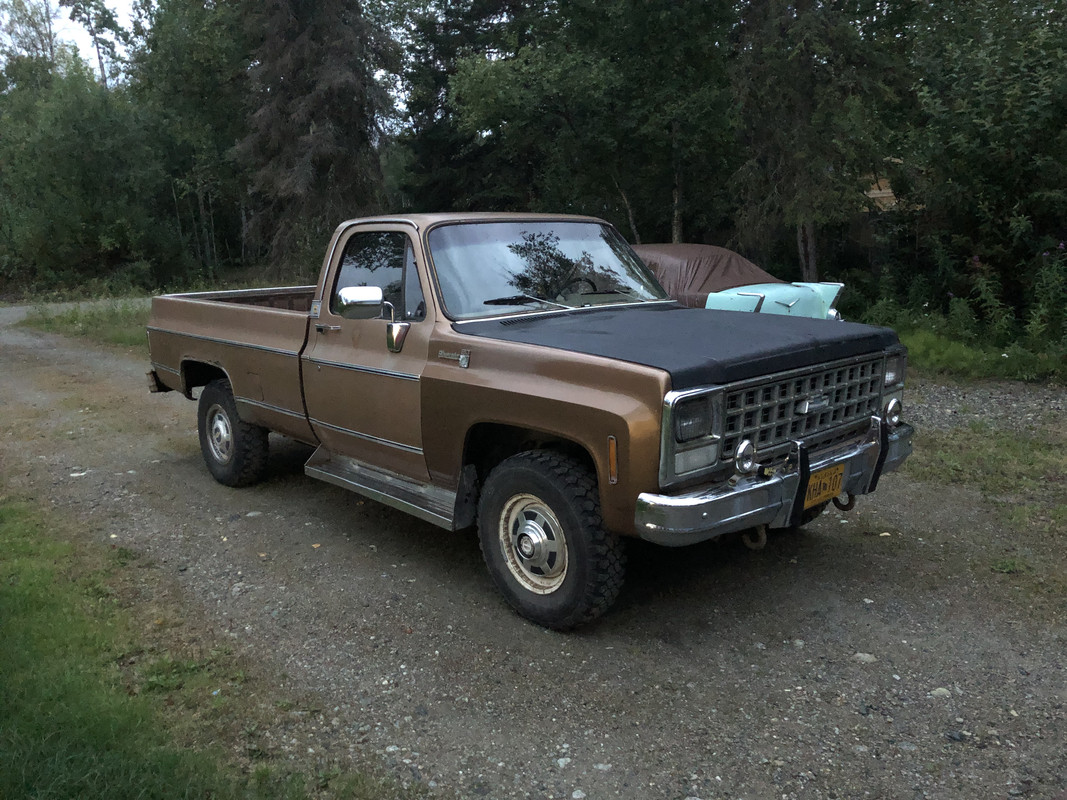 I didn’t even get a chance to do any work on it, as the very next day I had an appointment to do a VIN inspection and title on my ‘57 Chevy. I borrowed a trailer wiring adapter off another Squarebody, hitches it up in the morning, and towed her in! 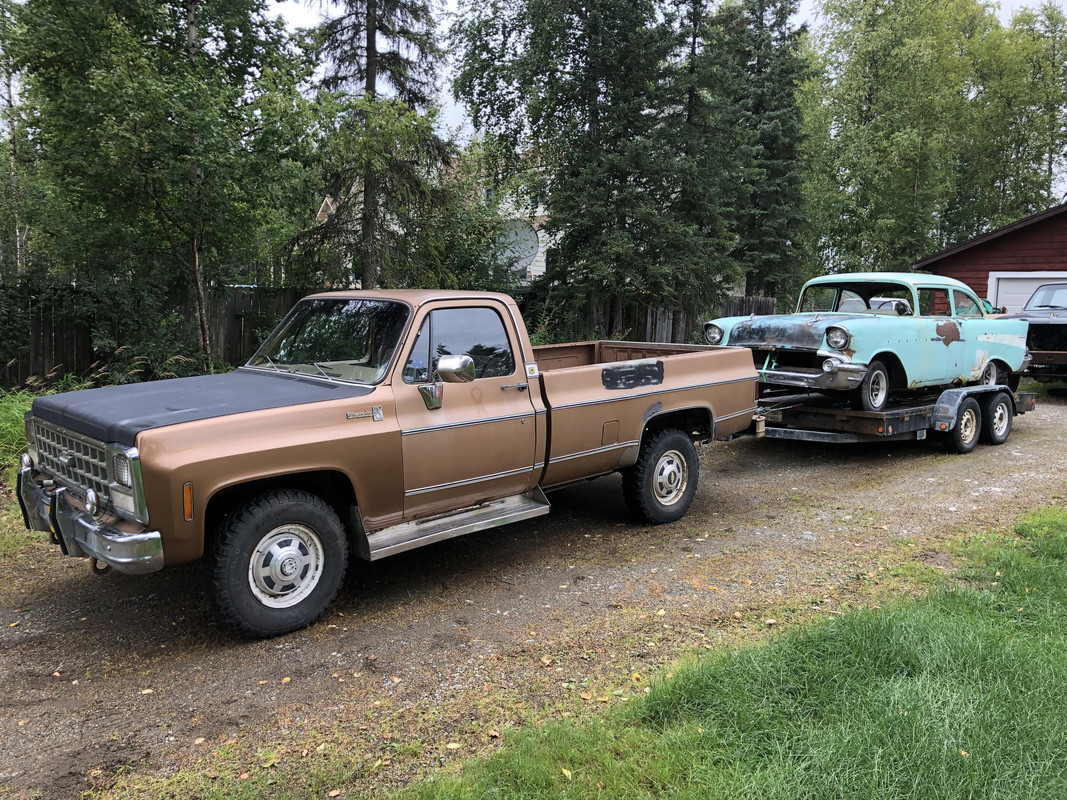 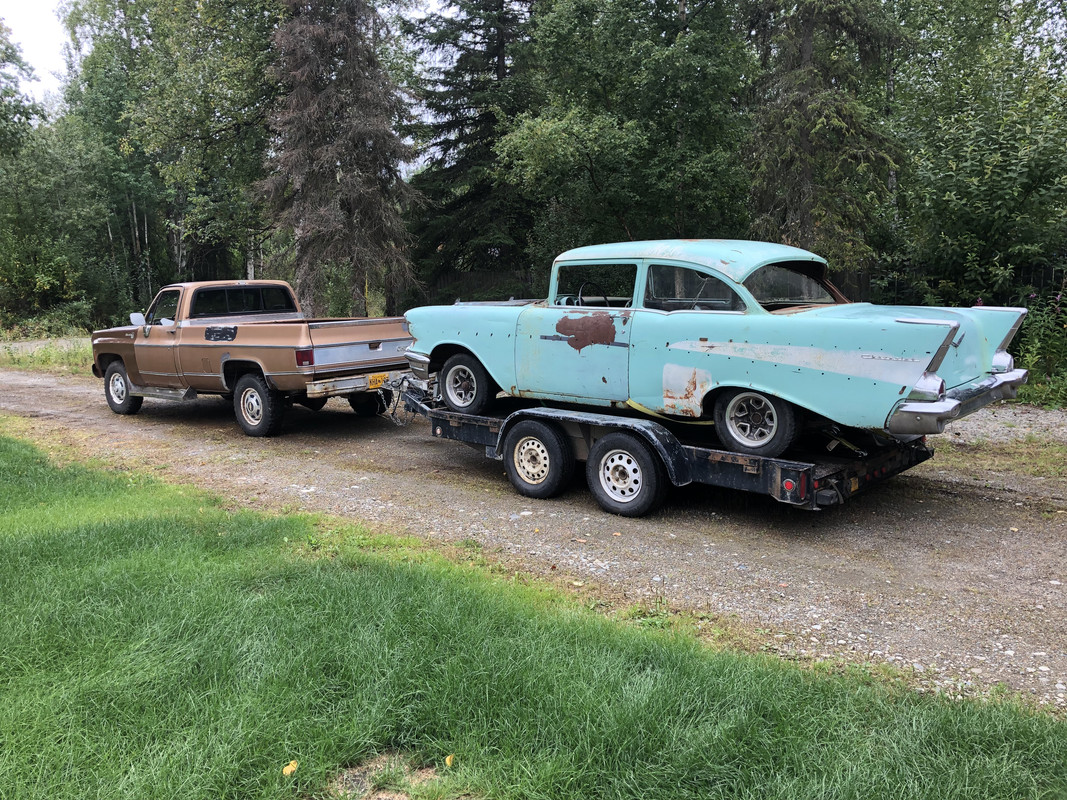 When I was driving home initially, I noticed that I had no low beam lights. I figured the floor switch was bad, so I picked up a new one. 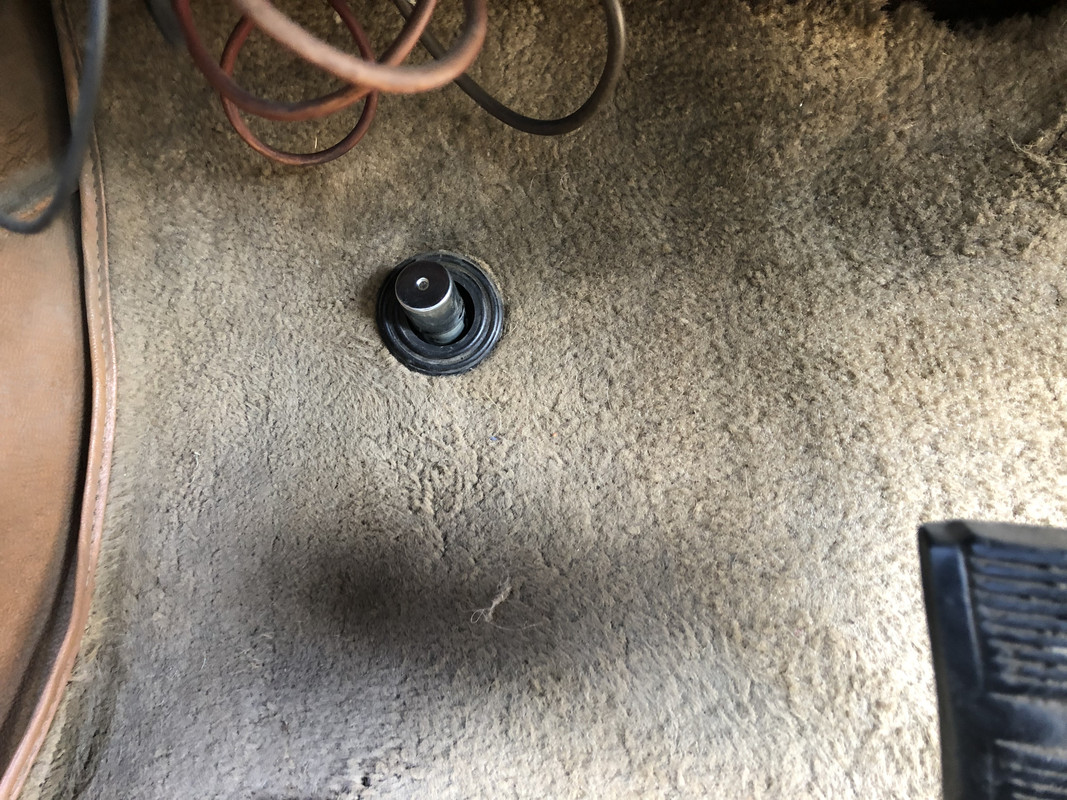 Turns out that wasn’t actually the issue, both headlights were just bad, but I had planned on upgrading anyway, so I had this extra set of LED headlights handy that were leftover from another project! 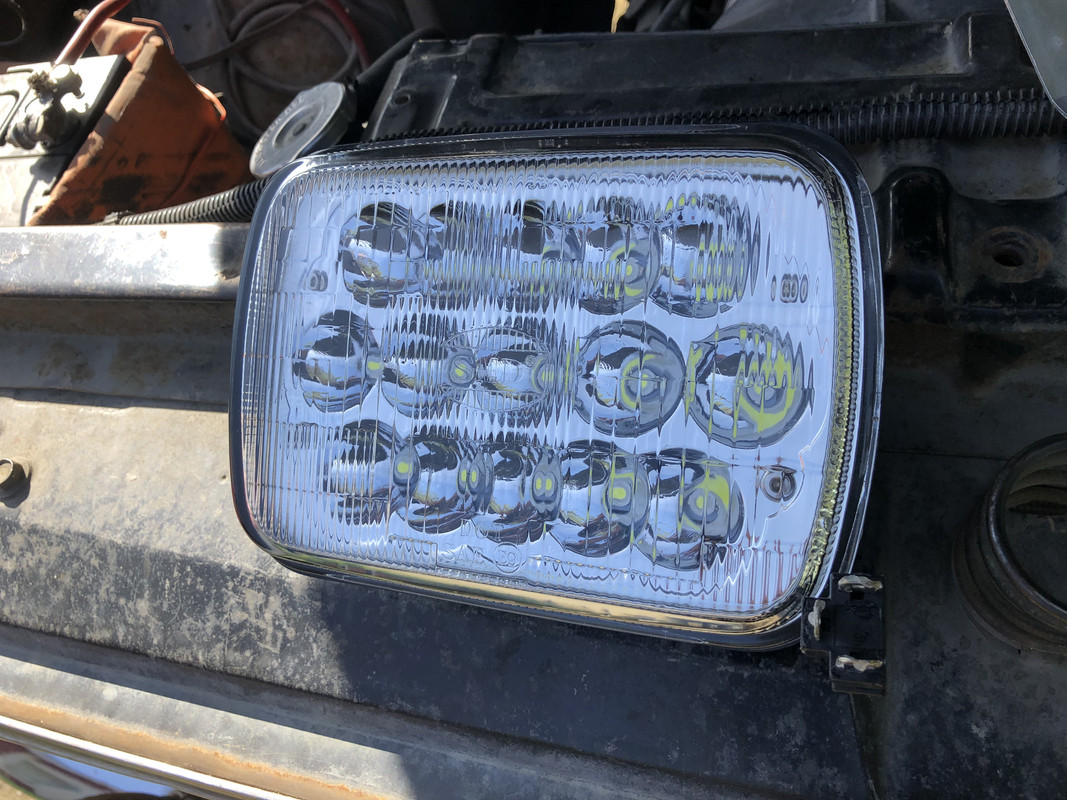 Started by removing the old, water filled headlights and guards.  New lights installed!  Low beams  High beams 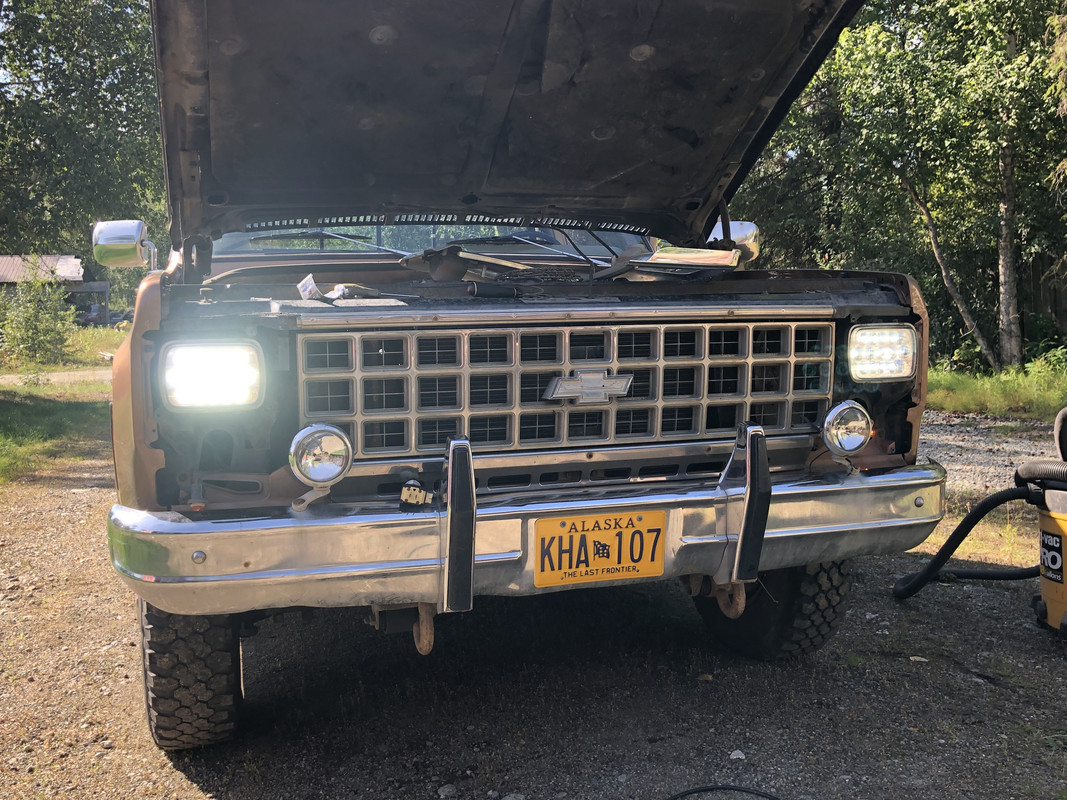 Next step, vacuumed and cleaned the interior  Found this impressive wiring connection on an auxiliary switch!  I took the gauges out and cleaned the gauge faces, lens, and replaced the burnt out bulbs, which most of them were. I removed the CB radio and all of the aftermarket wiring in the truck. The fuel gauge was on a separate switch from the tank switch, which turned out that it was simply a cut wire from the auxiliary tank that was never repaired when it was removed. 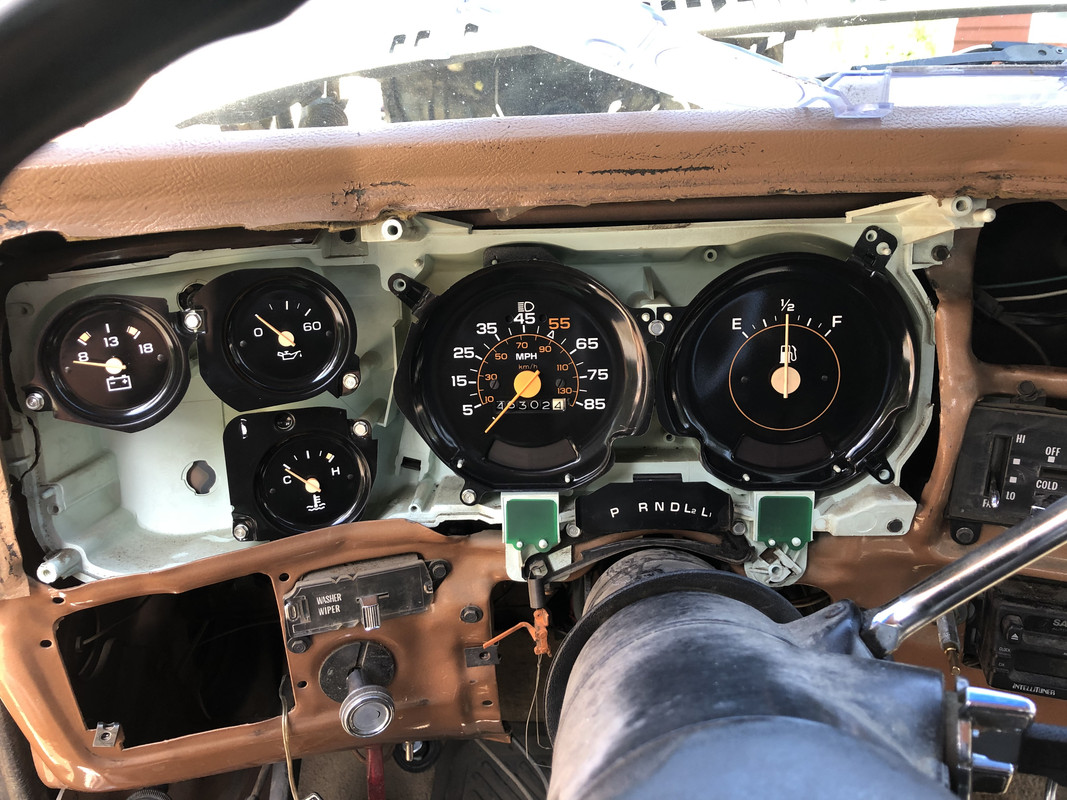 The PRNDL indicator was broken, so I did a quick fix with an electrical crimp, just to have it functional.   I also fixed the horns, and replaced a missing sub harness for the 4WD indicator light. |
|
|

|
|
|
#2 |
|
Just here to tinker
 Join Date: Jun 2008
Location: Holland, MI
Posts: 3,672
|
Re: 1980 Chevy K20 Longbed - “Alaskan Gold”
Sweet truck! What are your plans for it? It’s really clean.
__________________
78 C10 SWB Diesel #1 (wrecked)http://67-72chevytrucks.com/vboard/s...1978+silverado 78 C10 SWB Diesel #2 (sold)http://67-72chevytrucks.com/vboard/s...d.php?t=650751 60 GMC Suburban (sold)http://67-72chevytrucks.com/vboard/s...d.php?t=445526 60 GMC 1000 (sold)http://67-72chevytrucks.com/vboard/s...d.php?t=298235 67 GMC 1500 (sold) http://67-72chevytrucks.com/vboard/s...d.php?t=803695 86 Suburban(summer unit) http://67-72chevytrucks.com/vboard/s...d.php?t=810697 88 Suburban 4x4(winter unit)https://67-72chevytrucks.com/vboard/...25#post8900725 |
|
|

|
|
|
#3 |
|
Registered User
Join Date: May 2016
Location: Willow, Alaska
Posts: 836
|
Re: 1980 Chevy K20 Longbed - “Alaskan Gold”
Thanks! It’s just going to be a driver for me. There is a bit of rust that’s hard to pick up from the pictures (drivers rocker and toe board needs attention), but I’d like to get that cleaned up and have the paint corrected as close as possible to match the new fenders. I’m going to make it mechanically solid and clean it up for the most part. I’d love to find some 1st Gen Duramax wheels to put on it eventually.
|
|
|

|
|
|
#4 |
|
Registered User
Join Date: Feb 2017
Location: Ontario Canada
Posts: 133
|
Re: 1980 Chevy K20 Longbed - “Alaskan Gold”
Neat truck. Looks pretty solid.
Will the guards fit over the LED lights? Might help keep the vintage look. |
|
|

|
|
|
#5 |
|
Registered User
Join Date: May 2016
Location: Willow, Alaska
Posts: 836
|
Re: 1980 Chevy K20 Longbed - “Alaskan Gold”
Thanks! The covers may have fit but I didn’t like them. Tossed them out.
I started on the tune up today! I ordered iridium plugs, wires, cap, rotor, PCV, silicone vacuum hose for the choke tubes, valve cover gaskets, new belts, AIR delete plugs, a degrees balancer cover, ceramic plug wire boots, and MSD recurve and vacuum advance limiting kits. I started off by removing the AIR pump and cleaning the block from the badly leaking valve covers. 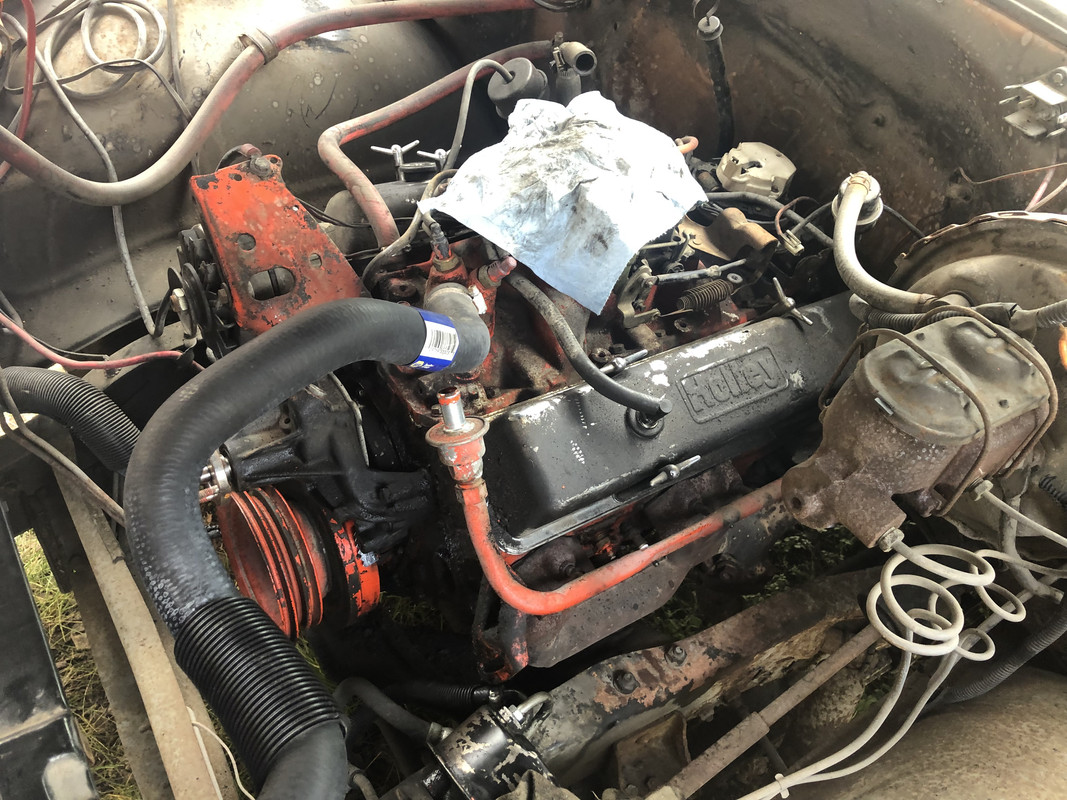 I removed this as I couldn’t seem to figure out exactly what it was for. It was bolted to the intake just in front of the distributor, tied into the +12v and Tach wires on the distributor, had a ground wire running to the rear head, and a 2 pin plug that ran up near the front of the drivers side of the engine. Nothing around for it to connect to. Nothing that I’ve ever seen on an SBC before. Anyone? 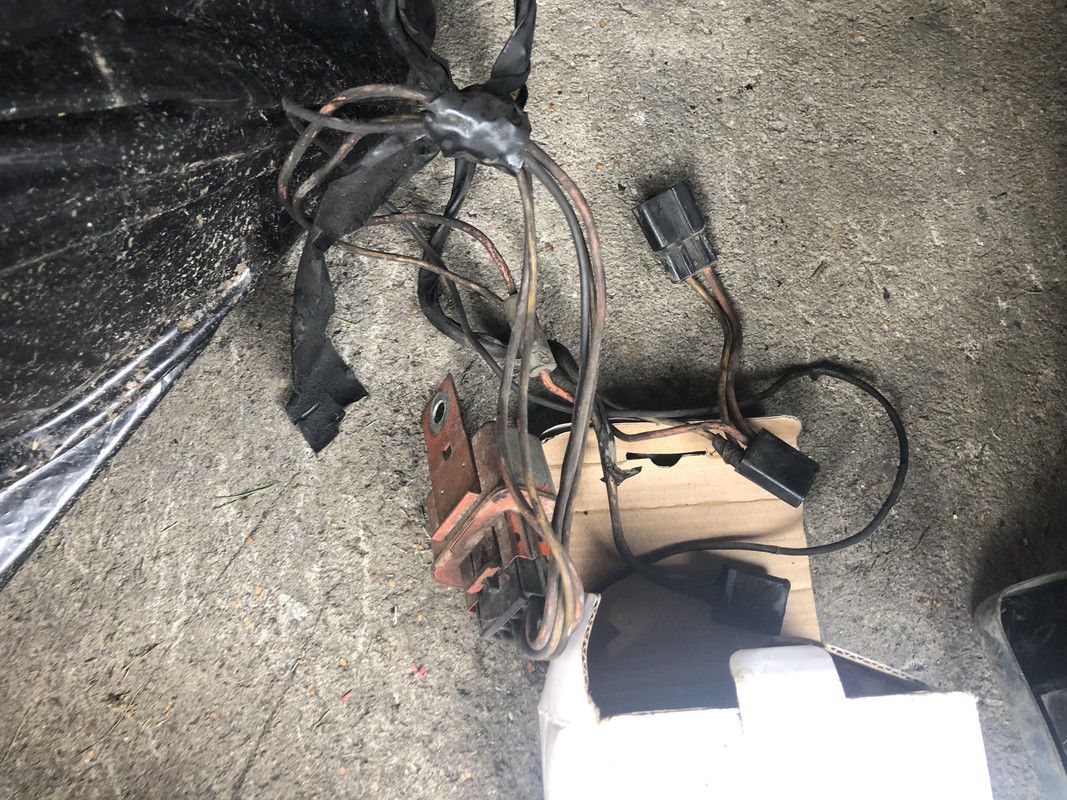 I’ve been having suspicions that the timing wasn’t right. The new exhaust manifold looked a little hot and the heat under the hood seemed higher than usual. I figured the balancer may have slipped, so I bought a balancer cover to eliminate that question. However, I removed the power steering for access and this timing tab didn’t look correct. However, the balancer was spot on, so I set the balancer at TDC on this timing tab, then went out and bought a replacement just to be sure. 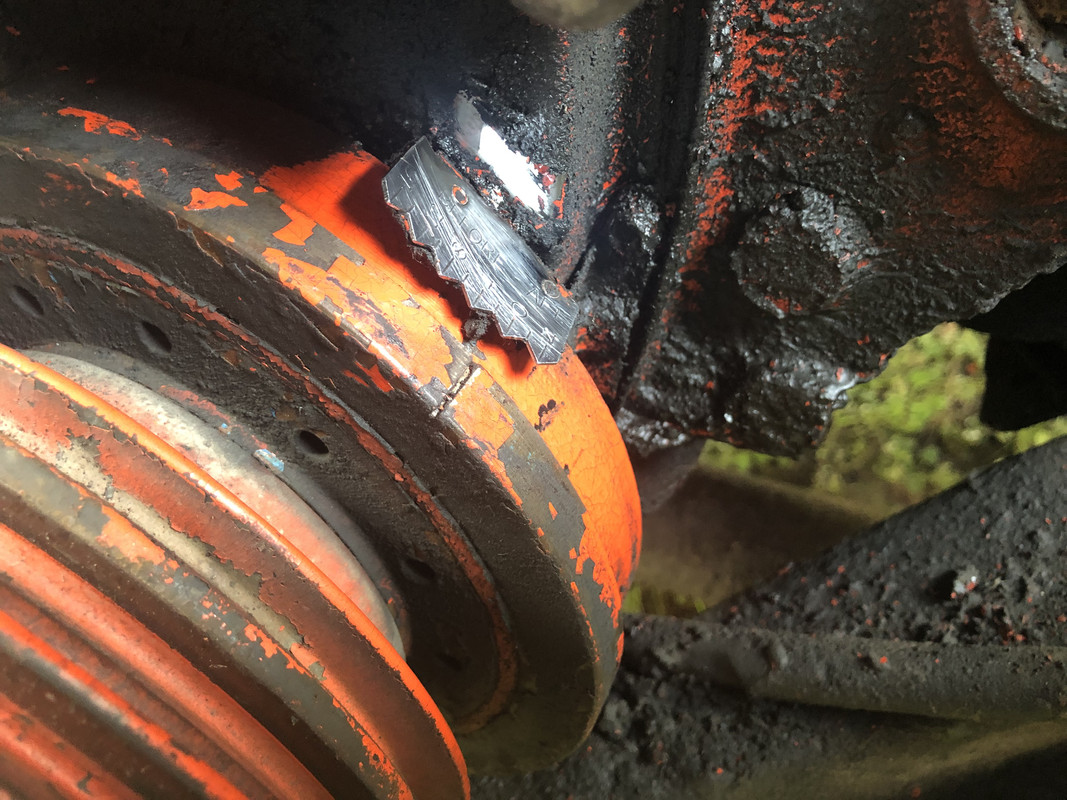 So it turned out that my gut feeling was right! The timing was indeed off…I just didn’t expect 14 degrees AFTER TDC off!  That old timing tab was definitely off of some other engine, who knows what at this point. Oh well, problem solved! That old timing tab was definitely off of some other engine, who knows what at this point. Oh well, problem solved!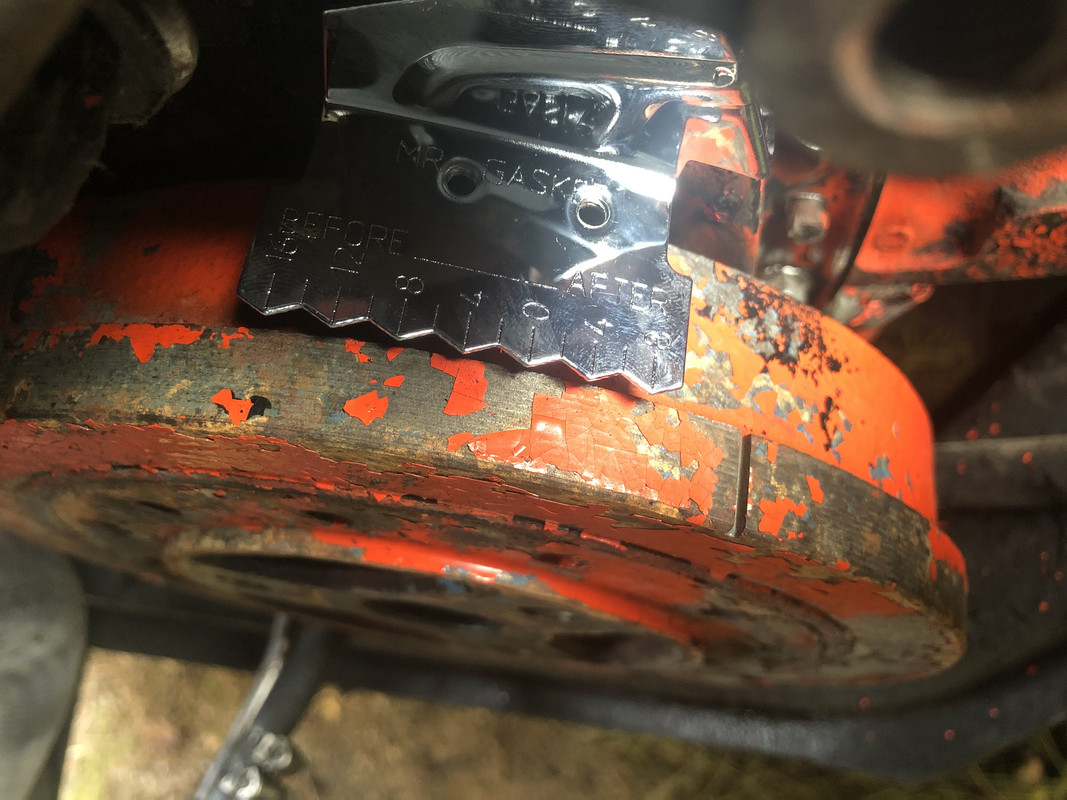 New balancer cover 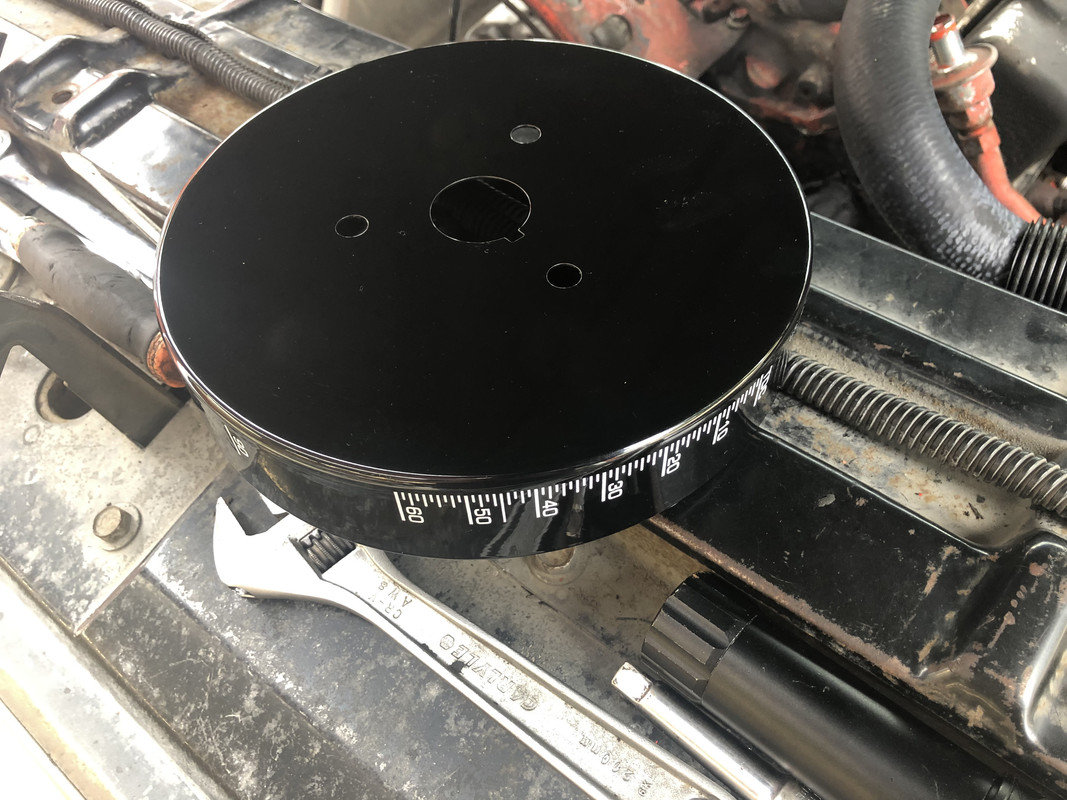 I also had to buy a new balancer bolt for…reasons  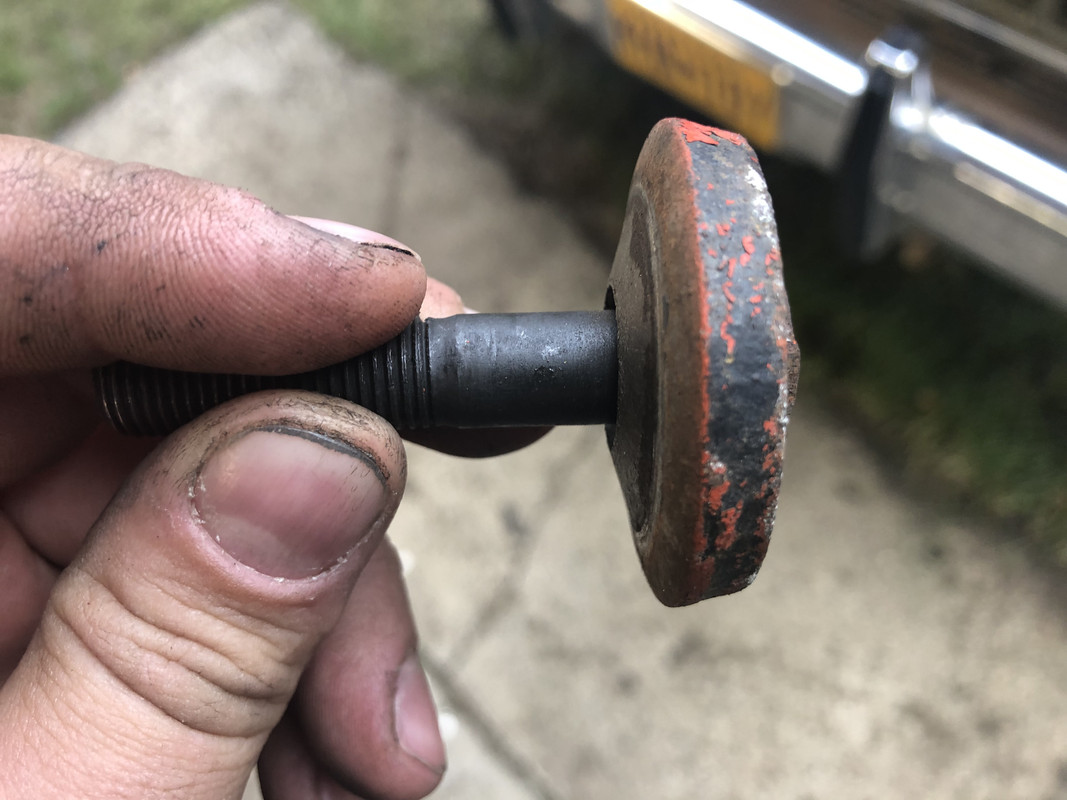 Cover and crank pulley installed!  Next up, valve covers. I had a new set off of a crate engine that I’ve been sitting on forever. This seems like the perfect truck to put them on! I’m very happy to ditch the leaky, mismatched chrome covers. Also installed new grommets and PCV valve in them.  New gaskets glued in place! 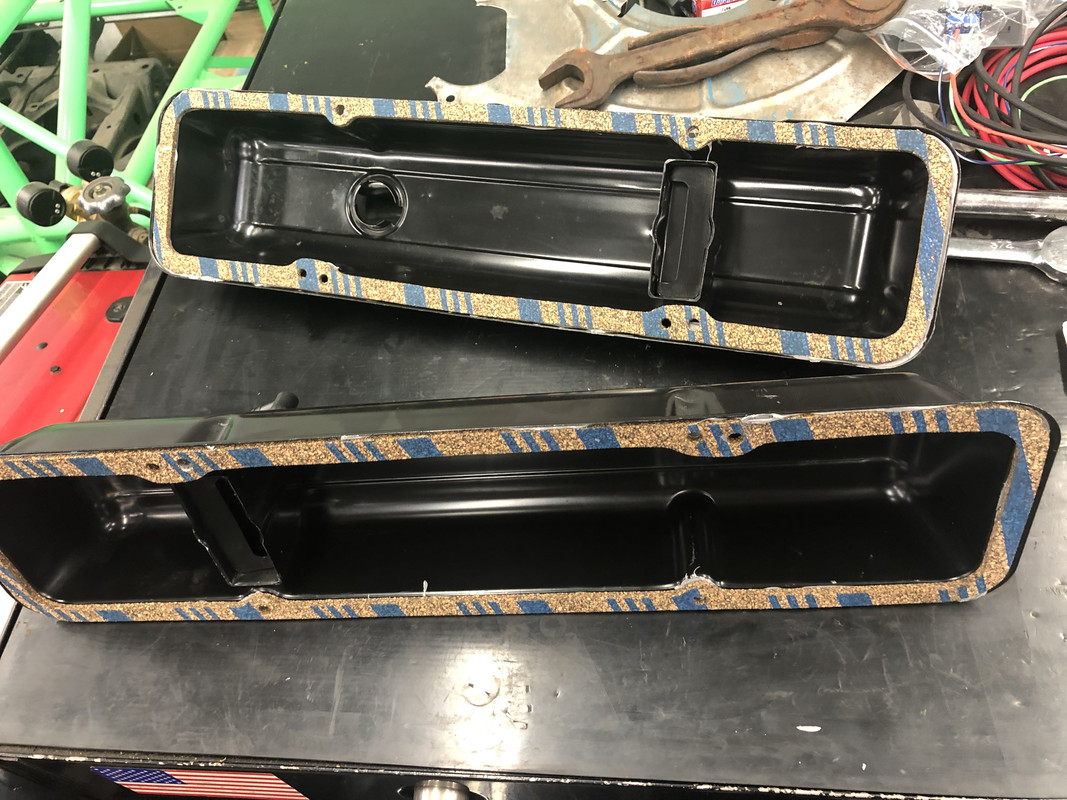 Passenger cover installed!  Driver cover installed! You can also see that the manifold’s AIR tube has been removed and plugged, the new belts are installed, and the power steering pumped has been shimmed for better belt alignment. 
|
|
|

|
|
|
#6 |
|
Registered User
Join Date: May 2016
Location: Willow, Alaska
Posts: 836
|
Re: 1980 Chevy K20 Longbed - “Alaskan Gold”
Moving on to the actual tune up, I noticed the coil ground terminal was missing, which causes the coil to burn up. Sure enough…
 One new coil later!  Worked on installing the vacuum advance limiter, and playing with the distributor springs.  Pretty good tune up! It now idles at 800 RPM with 20” of vacuum.  Tune up complete! 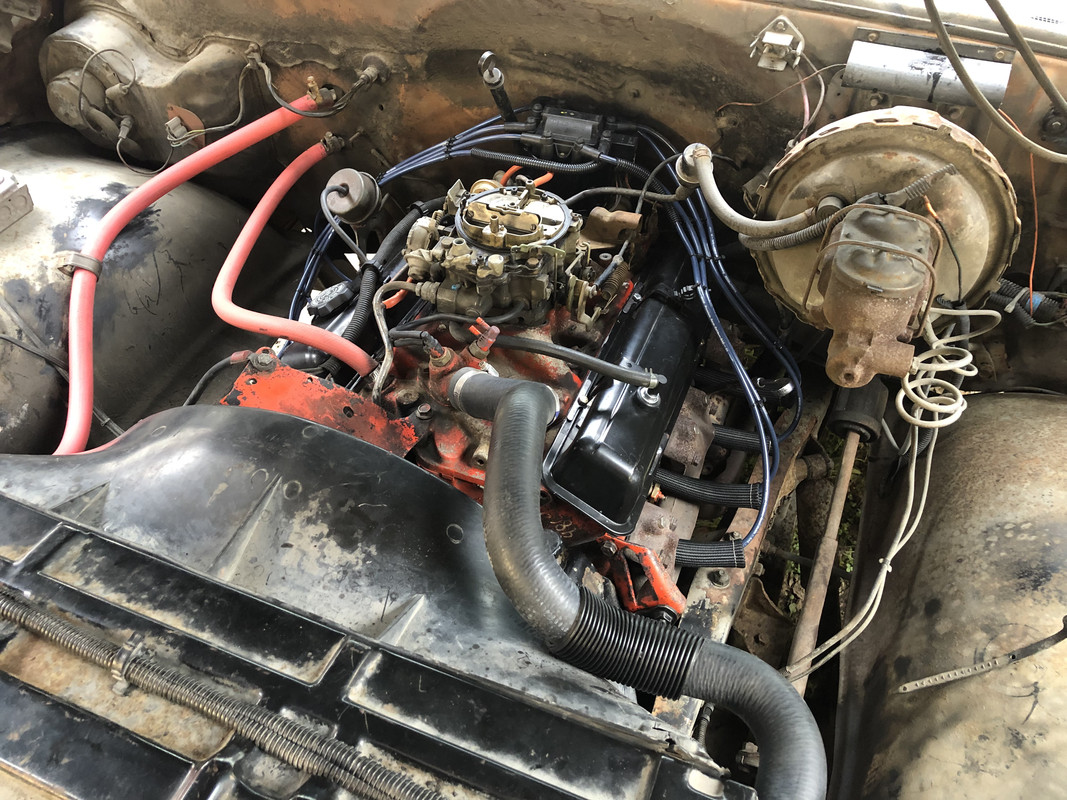 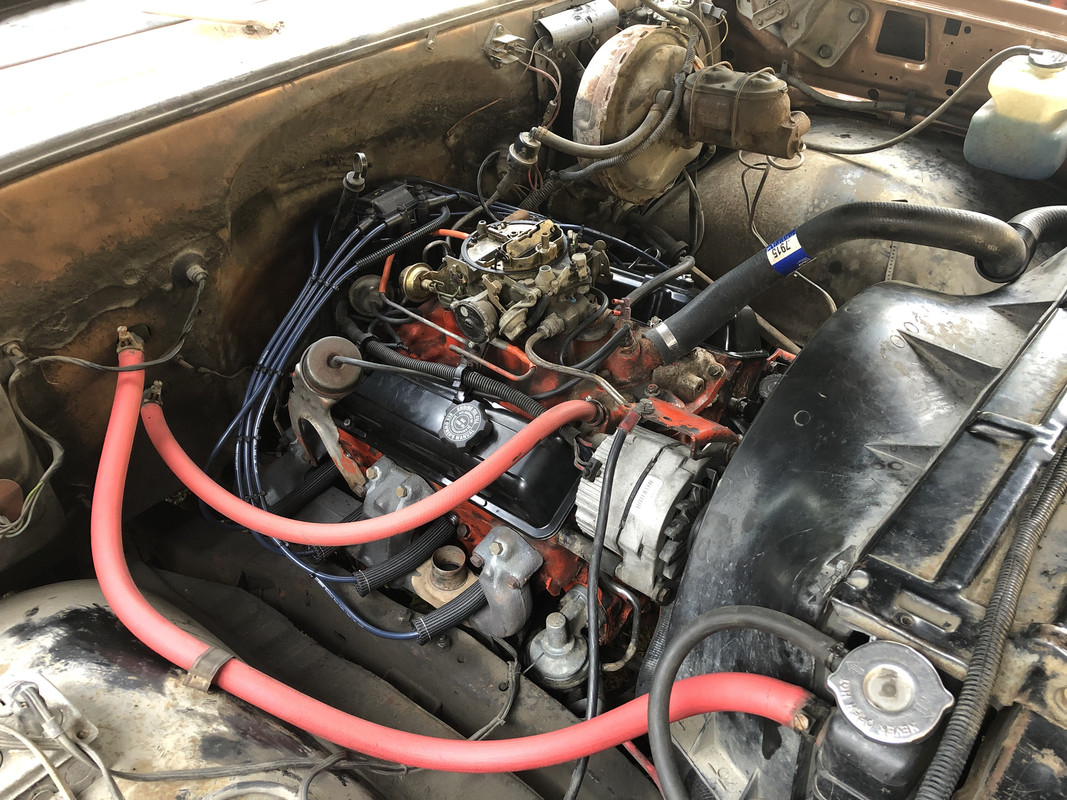  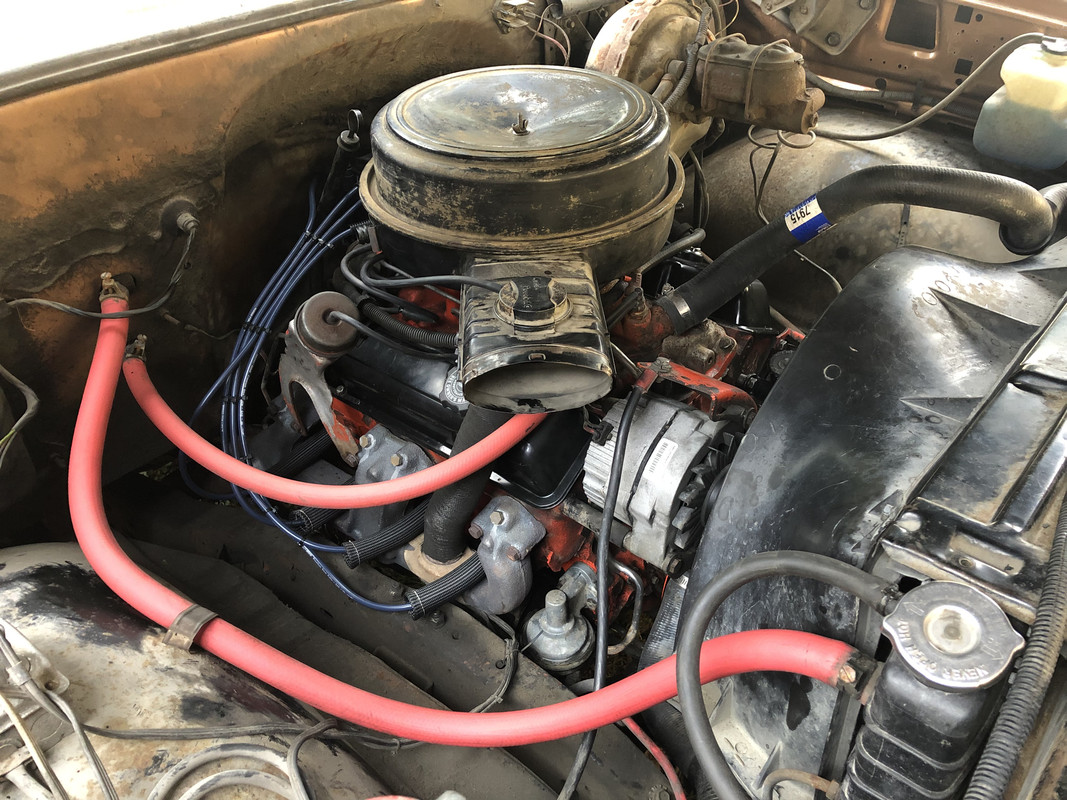 I found these two missing parts at the junkyard when I went to measure an axle for another project!  Both installed! 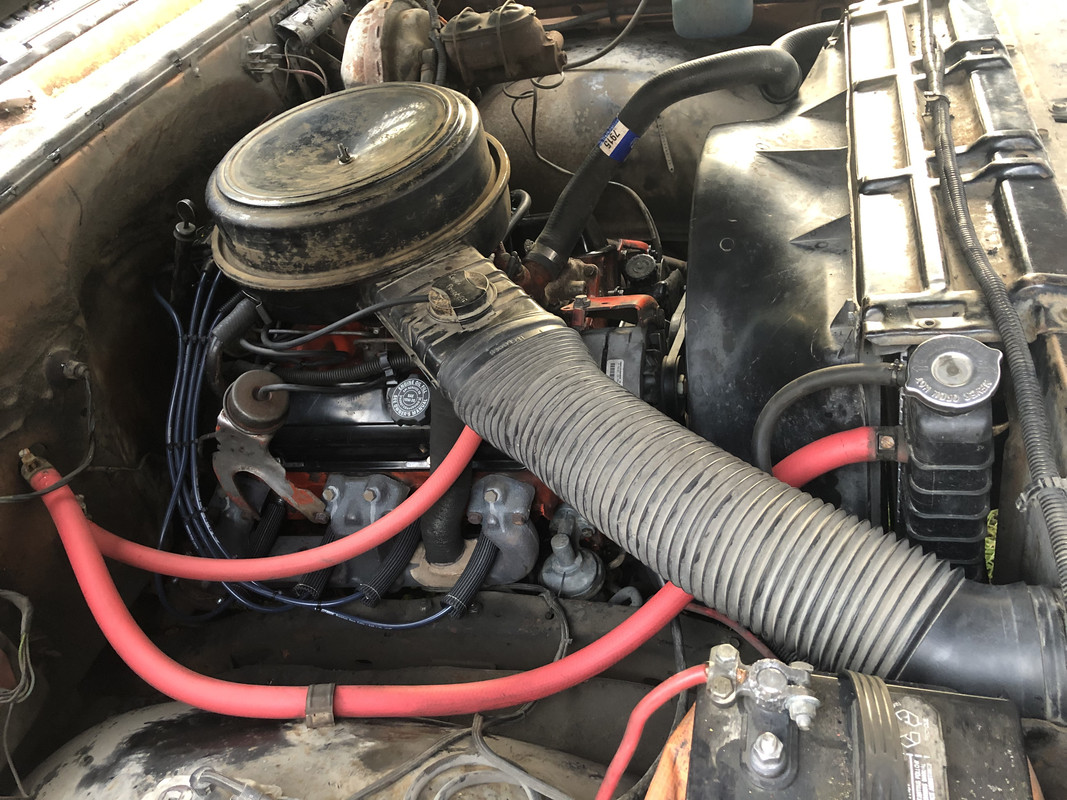 So the final tune up specs ended up as following: 800 RPM 10* Initial timing Vacuum advance limited to 10* 10* + 10* vacuum advance = 20* Idle Stock weights + bar, MSD Medium and Medium spring (300’ elevation) 32* Total Timing, all in at 3000 RPM I can safely say that this thing is now a 4 wheeled rocket! It’ll burn the tires from a roll! From the condition that I bought it in to now, I feel like I’ve gained 100HP! Which may actually be the case, with as poorly tuned as this engine was. No more lazy engine when on the throttle, it just flat out goes now! Very, very happy with the SBC 400’s performance now! |
|
|

|
|
|
#7 |
|
Registered User
Join Date: May 2016
Location: Willow, Alaska
Posts: 836
|
Re: 1980 Chevy K20 Longbed - “Alaskan Gold”
I played around with the carb settings a little more today, and I’m extremely happy with his the truck runs now. The cold idle was 2500 RPM, now down to 1100-1200. Hot idle is now at 750 Park/650 Drive. Holds it very steadily!
I also repaired the wire for the temp gauge, since it was on its last leg. 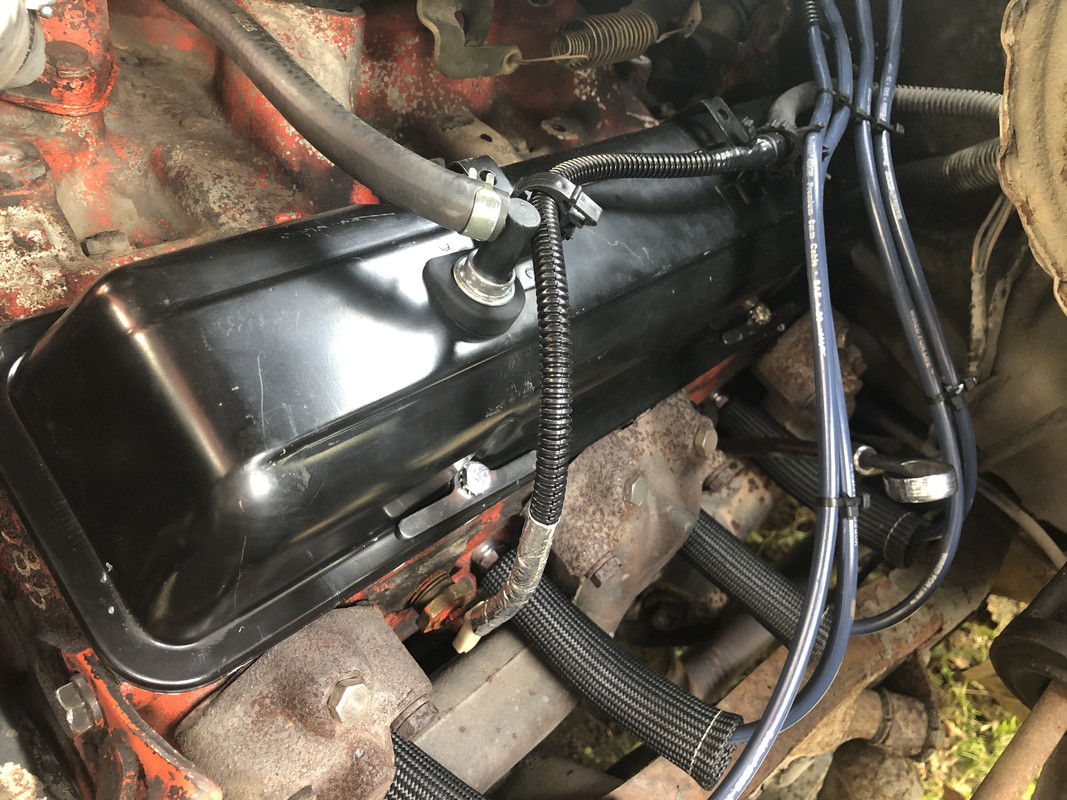
|
|
|

|
|
|
#8 |
|
Just here to tinker
 Join Date: Jun 2008
Location: Holland, MI
Posts: 3,672
|
Re: 1980 Chevy K20 Longbed - “Alaskan Gold”
Very nice! 20 inches at idle is amazing, that shows its a healthy motor. Good work.
__________________
78 C10 SWB Diesel #1 (wrecked)http://67-72chevytrucks.com/vboard/s...1978+silverado 78 C10 SWB Diesel #2 (sold)http://67-72chevytrucks.com/vboard/s...d.php?t=650751 60 GMC Suburban (sold)http://67-72chevytrucks.com/vboard/s...d.php?t=445526 60 GMC 1000 (sold)http://67-72chevytrucks.com/vboard/s...d.php?t=298235 67 GMC 1500 (sold) http://67-72chevytrucks.com/vboard/s...d.php?t=803695 86 Suburban(summer unit) http://67-72chevytrucks.com/vboard/s...d.php?t=810697 88 Suburban 4x4(winter unit)https://67-72chevytrucks.com/vboard/...25#post8900725 |
|
|

|
|
|
#9 |
|
Registered User
Join Date: Oct 2015
Location: PNW
Posts: 3,498
|
Re: 1980 Chevy K20 Longbed - “Alaskan Gold”
That's a great outcome for a job well done. Cool to have the displacement that in the previous generation required having a big block. I'll bet that thing moves. Question about the iridium plugs. Do you buy them for performance, or longevity, or both?
|
|
|

|
|
|
#10 |
|
Registered User
Join Date: May 2016
Location: Willow, Alaska
Posts: 836
|
Re: 1980 Chevy K20 Longbed - “Alaskan Gold”
Thanks guys! It certainly does move now. I would love to see how a pair of Vortec heads and a cam does on an engine like this, especially since the Vortec heads favor 32 degrees also. I bet it would be a pretty amazing combination.
I’ve always gone with Iridium just because it’s the best material available in a spark plug. It is longer lasting and has great anti-fouling capabilities. Ignition systems are a bit of a misnomer when it comes to performance gains - you’re not going to “gain” power in the sense of adding a cam, better set of heads, or turbo will, as examples - but you can restore lost power when compared to worn or low quality ignition components. Preventing a power loss (rather than creating a power gain) is the best way to put it. I did a little more on the truck this weekend, and changed out the old shocks for some new gas charged units for a better ride and to give them more control.   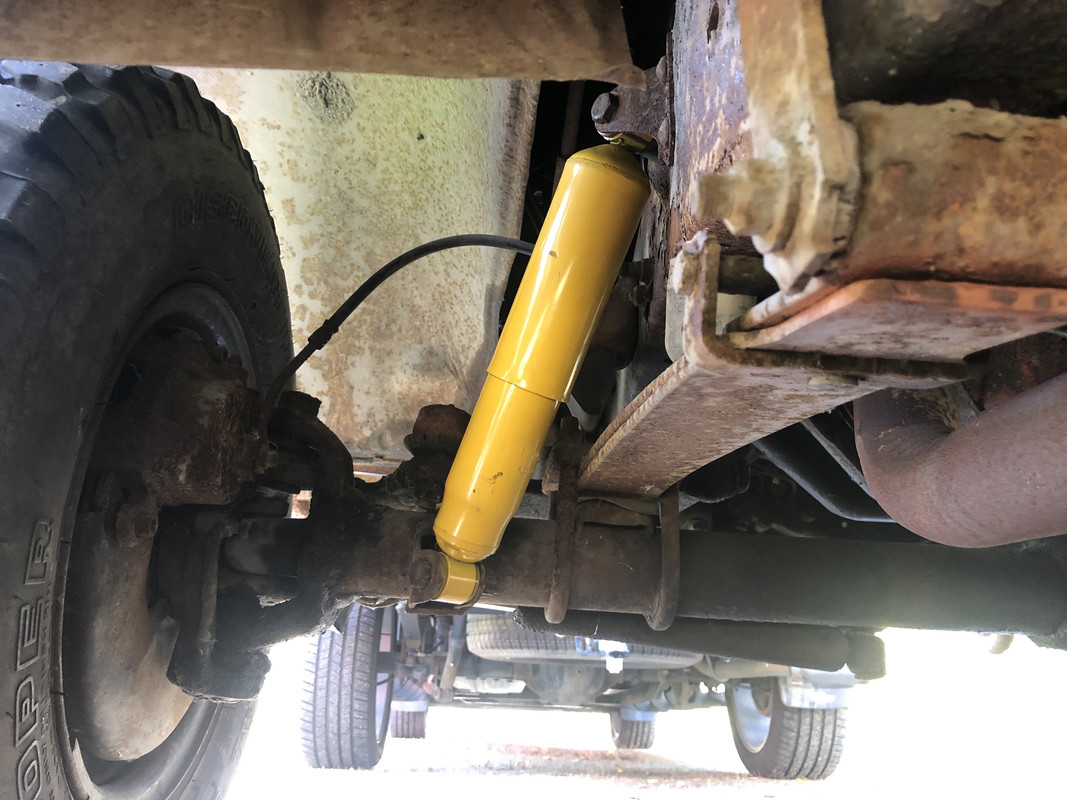
|
|
|

|
|
|
#11 |
|
Registered User
Join Date: Oct 2015
Location: PNW
Posts: 3,498
|
Re: 1980 Chevy K20 Longbed - “Alaskan Gold”
I think I understand what you're saying with ignition components and think similarly. It tends to push me toward running copper plugs since they are inexpensive and I just replace them regularly. I feel like they perform as well as the precious metal plugs, but they just don't last as long. But I saw a chart by NGK, and that's made me think about it more. Obviously, they want to sell more expensive plugs, but I do tend to trust them. Performance-wise, I think ignition components can improve performance in the way of more complete burning of the air / fuel mixture, but they obviously can't add to the mixture itself which is the baseline bringer of performance along with compression. An MSD box allows you to open your spark plug gap by 10 / thousandths, so that ought to allow you to get a better and maybe bigger burn. So I guess from a performance perspective it's taking advantage of all of the air and fuel that's already there, and upgrading where there might have been factory compromises. Other than that, you've got to get more air and fuel, or squish it more if you want more performance.
Last edited by LT7A; 09-20-2021 at 03:06 PM. |
|
|

|
|
|
#12 |
|
Registered User
Join Date: Oct 2015
Location: PNW
Posts: 3,498
|
Re: 1980 Chevy K20 Longbed - “Alaskan Gold”
Here's a link to the NGK spark plug chart that got me thinking. You have to scroll to the bottom of this RockAuto page. I couldn't find the chart elsewhere. You seem to have good knowledge and a practical approach to tuning and performance so I thought I would compare notes with you. Thanks for your thoughts.
https://www.rockauto.com/en/parts/ng...park+plug,7212 |
|
|

|
|
|
#13 |
|
Registered User
Join Date: May 2016
Location: Willow, Alaska
Posts: 836
|
Re: 1980 Chevy K20 Longbed - “Alaskan Gold”
You’re pretty much spot on. For the most part (and yes, there are exceptions to this), a spark is a spark. If a spark has enough energy to ignite a mixture under compression, there is little you can do to improve upon that. Indexing spark plugs would be one way (positioning the electrodes to be exposed to the mixture and the tip to the rear instead of blocking the flame path) would net you a small gain at higher power levels. You can increase the plug gap if the rest of the ignition system is capable of supporting the higher energy output with the goal of creating a larger spark (spark area) exposed to the mixture, but you’re more looking at added component wear in the hopes of a complete combustion process which may not be an issue to begin with. You also start having more inconsistent spark the higher your cylinder pressure becomes, whether high compression, boost, etc - the pressure can quite literally “blow out” the spark. This is why higher performance engines actually trend towards a smaller gap as performance/cylinder pressures increase - the smaller, quicker, more intense spark, especially when backed by a higher energy ignition system, is more capable of withstanding higher cylinder pressures and richer fuel mixtures, as well as taxing the ignition system less while delivering more spark energy, as it isn’t being wasted by being used to jump a long distance gap.
|
|
|

|
|
|
#14 |
|
Registered User
Join Date: Oct 2015
Location: PNW
Posts: 3,498
|
Re: 1980 Chevy K20 Longbed - “Alaskan Gold”
Interesting info. I never thought about a bigger gap causing you to burn up ignition components sooner. Still not sure if I get it. It seems that if the electrical potential is there, why not make it jump further? However, my last set of plug wires, cap and rotor didn't seem to last as long as the previous set. And they were installed along with an MSD box and I had started gapping the plugs wider. I wouldn't put it past MSD to recommend a wider gap which nets a small performance gain and also sells more ignition components. With regard to opening the plug gap, I'm speaking of stock truck V8s which are going to be in the 8.7 to 9.2 range for a compression ratio probably. In the final analysis, I'm just an enthusiast to try to pay attention. Do you have a formal background/experience with regard to this stuff?
|
|
|

|
|
|
#15 |
|
Registered User
Join Date: May 2016
Location: Willow, Alaska
Posts: 836
|
Re: 1980 Chevy K20 Longbed - “Alaskan Gold”
The reason you wouldn’t want a larger gap is because it becomes less reliable over RPM, compression, and wear as components are used. Here’s a crude comparison: Think of you running along a road filled with potholes, large enough that you have to jump over them. You’re the spark, and you need to bridge that gap. Smaller potholes are easy to jump and don’t require much energy, while still getting you across. Larger potholes are harder to jump, and while still getting you across, it takes more effort (energy), wearing you down and tiring you out. The more of these you have to jump, the higher of a chance there is that you (the spark) might not complete the jump. Now, imagine the same scenario, except you have a massive windstorm pushing back against you - this would be like increasing compression. You can still jump the same smaller potholes, or you may want to stick with even smaller ones (gaps) than you were before, just to guarantee you (spark) make it across. The larger ones you may not even make at all, due to the wind pushing back too hard, especially if it was already a difficult jump before.
You may not notice ignition effects much in a stock engine with low compression ratios. They’re designed to operate on pretty much everything being out of whack and still remain in service. Perfect example: My 400’s ignition timing being 14* ATDC, burnt plug wires, deposits on plugs, and still being used as a daily driver. Correct? Definitely not. Functional? Absolutely. On a side note, I’m not really a big believer in MSD boxes. Don’t get me wrong, they do work! But their effects are completely diminished by 3000 RPM, which by then, you’d definitely want the benefits of a good quality ignition system in place anyway, sort of rendering the box useless. If you can produce great spark at high RPM under high cylinder pressure, you won’t have a problem at low RPM. The point of an MSD box is to take advantage of the longer dwell time at low rpm, and fire the coil repeatedly in that period, creating the “Multiple Spark Discharge” nameplate. The original idea behind this, is that at low RPM, your spark is weak and multiple sparks occurring during a normal “1-spark” period, will mask the effects of a weak spark possibly causing an incomplete combustion. However, this effect ends at 3000 RPM, which is an operating range seen mostly by stock vehicles, or daily driver used performance vehicles. In those cases, will you see a difference? Very likely, but less so if your ignition system is in great shape to begin with. Reference back to the ‘Preventing a loss rather than creating a gain’. My personal feelings are that I would rather just start out with a well built high energy system, because if you’re consistently turning over 3000 RPM, you’ll find the most benefit at higher RPM (which is where true race engines spend their time), which also automatically translates to better spark at all RPM, including lower RPM. The longer dwell time at lower RPM also equals better coil saturation, which equals more energy for a better spark, so by having a better system to start with, you automatically create a better low RPM spark and negate the need for multiple sparks in that low RPM window. Not that it would really hurt anything to run an MSD box (although they do offer other means of control such as RPM limiting, timing retards, etc that are very beneficial!), you just may not get much, if any, improvement in that regard. Keep in mind that MSD was developed in the 70’s when points were commonplace and ignition system capabilities were extremely limited compared to what they are today. I do have pretty extensive background on motorsports in general, although I’m far from knowing everything there is to know about engine theory. I certainly wish I could be there! :P I do a lot of research and seek out the info posted on forums from a lot of the ex-engineers from GM, Ford, Chrysler, which is usually incredibly long reads but amazing information, one of the best resources you’ll find out there in my opinion. I have a hand in building many of the circle track championship-holding engines here locally, although I’ve slowly moved out of that scene recently, it’s a fun way to see how real world changes apply when it comes to tuning. |
|
|

|
|
|
#16 |
|
Registered User
Join Date: Oct 2015
Location: PNW
Posts: 3,498
|
Re: 1980 Chevy K20 Longbed - “Alaskan Gold”
Good info Nick, and thanks for letting me hijack your thread a little bit to compare notes. My MSD box is on my TBI truck. From the beginning, that truck has been about tweaks, rather than component replacement like camshaft, etc. That's why I added the MSD. And actually, even with the 3.73 rear end, I very seldom run it over 3,000 rpm. I would call working on those engines - hot rodding by degrees. Unless you take the leap and get a custom chip made, you're pretty limited as I'm sure you know. I'm not convinced of the value in mail order chips since my truck runs really well. The cumulative effect of all of the tweaks is a truck that runs much stronger than new, with 235,000 mi. So I don't regret the MSD box, or the wider gap since each little effect adds up. I may split the difference though down to 40/1000s to save a little wear and tear on the ignition components. Appreciated the pothole jumping analogy, that was well done. I still I feel like the ignition system sends the same power, based on the coil and lack of resistance. And then it either jumps the gap or it doesn't. I don't see how the gap determines how much juice is sent down the wire. That's why I like talking about this stuff, because I always learn.
|
|
|

|
|
|
#17 |
|
Registered User
Join Date: May 2016
Location: Willow, Alaska
Posts: 836
|
Re: 1980 Chevy K20 Longbed - “Alaskan Gold”
No worries! Since you’re running stock, I’d gap at .035. I think you’ll find that’s optimum for what you’re doing.
The gap doesn’t determine how much voltage is command - but it does determine the amount of voltage required to force the spark to jump a given distance, which may exceed your coil’s capability. There are actual numbers that I don’t know off the top of my head, but for ease of explanation, let’s say that every .010” of plug gap requires 10,000v to reliably jump the gap and create a good spark. .020” requires 20,000v, .030”, requires 30,000v, and so on. Let’s say the coil is stock, capable of producing 40,000v. You coil would be safe until .040”. Now, let’s say you want a .060” plug gap - your coil may not be up to the task. Spark plug air gap should be thought of as a measure of resistance - you aren’t providing the electricity with a direct path. You’re forcing it to travel over both a distance with no true conductor, and through air which is a resistor by itself. Picture a simple circuit with a battery and a light bulb, the bulb is bright until you add a resistor in line. Now add a larger resistor (larger gap), and the energy has an even more difficult time making it through, and the bulb is even dimmer. Too large of a resistor and the bulb will not light at all. At this point, we can either enlarge the energy source to overcome the resistor (larger coil) or remove some resistance to work with the energy source in place (smaller gap). Of course, this assumes your wires are rated to carry the given load, which is why wires too small in a normal circuit, or worn, high resistance spark plug wires will cause problems. They’re subtracting from what your energy source (coil) is capable of outputting. The coil can only put out what it’s capable of producing - which is partially determined by the internal structure of the coil, and partially from the quality of voltage seen at the input (13.8+ volts, vs a weak - for example, only 11.8v - or shared voltage line, which is why it’s recommended not to share coil voltage with other components), and also from coil saturation, the time the coil is allowed to build a charge internally. Your dwell, or time the coil is given to build this energy, can have a negative effect on coil output if the time given is too short. This is why MSD boxes have diminishing effects approaching 3000 rpm. The coil will always put out it’s rated voltage, assuming the source voltage and saturation time are proper. Your spark plug gapped at .030” may not require that full voltage, but it will still see that full voltage regardless. Your spark plug gapped at .060” may require that full voltage, and then some, but it will not see more voltage than the coil can produce. In this case, a better coil would be a good investment, not to gain power, but to prevent a loss. Whether the .060” gap is necessary, will depend on the engine, components, and intended usage. Usually, it will not be. |
|
|

|
|
|
#18 |
|
Registered User
Join Date: Oct 2015
Location: PNW
Posts: 3,498
|
Re: 1980 Chevy K20 Longbed - “Alaskan Gold”
Thanks, all makes sense. I have a good number of modifications that are aiding and abetting the quantity and quality of the incoming air / fuel charge. Getting a complete, clean burn is worth the occasional set of plug wires plus cap and rotor. I've got an MSD coil and so it ought to be up to the task of the MSD box plus the recommended plug gap. In thinking through all that we've talked about, I can see if the plug only pulled enough juice to jump the gap, that the related components would last longer. But I think when the distributor sends the zap, it's sending the full voltage / amperage of what's available, therefore I don't see that the longevity would be different depending on the gap. Maybe I'm just not getting it and I don't mean to monopolize your thread.
Last edited by LT7A; 09-23-2021 at 11:31 AM. |
|
|

|
|
|
#19 |
|
Registered User
Join Date: May 2016
Location: Willow, Alaska
Posts: 836
|
Re: 1980 Chevy K20 Longbed - “Alaskan Gold”
You’re totally fine. Think of the draw/wear analogy a different way, like a starter system in a car. The battery (coil), wiring (spark plug wires), and starter (spark plug gap) all have to be sized for each other.
If the battery is too small, or is weak, it can’t send the proper amount of energy to turn the starter, just as a coil may not be able to send enough energy to jump too large of a gap. If the battery cables are too small or severely corroded, it can’t properly transmit the amount of energy the system wants, regardless of battery output and starter draw, just as small/worn/high resistance plug wires may not be able to carry the entire amount of spark energy, regardless of coil output or energy needs at the spark plug. If the starter is too big for the system (requires a larger battery to operate), no amount of trying with a good fully charged, but undersized battery will turn the starter. Just as using too large of a spark plug gap can be too big for an otherwise properly working system - the energy is just not available to run it. Ignition wear can also happen in many areas of the system. Oversaturating coils, too low of voltage, too high of voltage, weak grounds, etc can cause the coil to overheat and burn up internal windings, or cause high resistance and force the energy to take an unwanted path, shorting out the coil. Low quality plug wires can break down over time. Spark plugs have microscopic amounts of material removed from their electrodes every time a spark occurs, which can be seen by rounded or shortened electrodes (wider gaps) on high mileage plugs. Normal but elongated useage will see this happen regardless, but too wide of a gap can accelerate the process. |
|
|

|
|
|
#20 | |
|
Registered User
Join Date: Oct 2015
Location: PNW
Posts: 3,498
|
Re: 1980 Chevy K20 Longbed - “Alaskan Gold”
Quote:
|
|
|
|

|
 |
| Bookmarks |
|
|